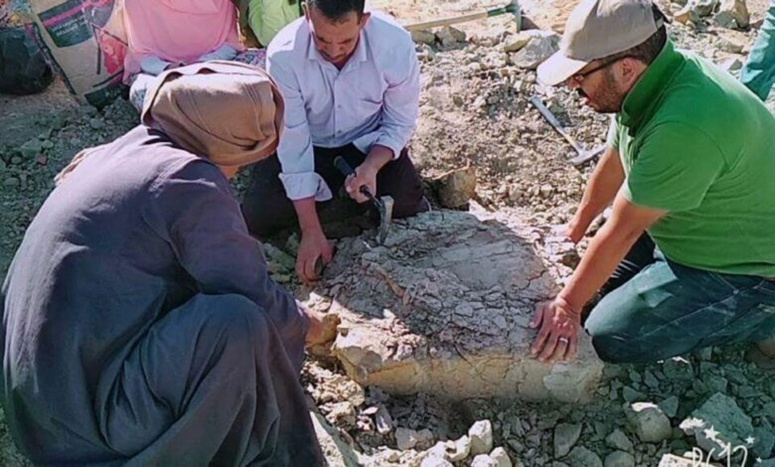Discovery of a river turtle more than 70 million years old in Egypt

The President of New Valley University in Egypt, Abdel Aziz Tantawi, announced that a joint research team between New Valley and Cairo Universities was able to discover a side-necked river turtle that is more than 70 million years old.
The university president said, in a statement, that this species was discovered and recorded for the first time in Egypt and North Africa under the name (Khargachelys carioensis) after the cities of Kharga and Cairo, which are more than 70 million years old and lived during the age of the dinosaurs.
He explained that this type of turtle lives in rivers and fresh water and is an almost complete shell. He added that this group has existed in geological history at separate periods and has not been recorded before in this era. This discovery is a continuation of the fossil records of ancient turtles in Africa.
Dr. Jebaili Abdel-Maqsoud Abu Al-Khair, Director of the University's Vertebrate Paleontology Center, said that the Qarn Jannah area is one of the sites recently discovered by the Vertebrate Paleontology Center at New Valley University, which represents one of the most important sites that contain large numbers of river and sea turtles, as well as many fossilized remains of dinosaurs and crocodiles. Its age dates back to the Upper Cretaceous (Campanian) era, which witnessed the great advance of the Tethys Sea (the ancestor of the current Mediterranean Sea).

He explained that this came after several simple hesitations of the sea in southern Egypt, which began more than 120 million years ago and then retreated over large distances to the north, affected by several factors, including tectonic movements and ancient climate, leaving a great opportunity for ancient rivers to form the large reservoir in southern Egypt.
He continued: After that, the great advance of the sea towards southern Egypt began after the Earth’s temperature rose as a result of global warming, which is due to the increase in the percentage of carbon dioxide in the atmosphere. The Tethys Sea covered most of the Western Desert in this era, forming very large shallow bodies of water, swamps, and ponds fed by river mouths, forming... Semi-fresh or semi-salt water allowed many organisms to live in it, such as crocodiles, turtles, and some fish. The area was also surrounded by dense vegetation, which allowed some other organisms to live around those swamps, such as dinosaurs of various types.
He stressed that these events are represented by the layers of multi-colored shale extending over large distances between the Kharga and Paris Oasis and also west of the Kharga Oasis up to the Dakhla Oasis.

The director of the Center for Vertebrate Paleontology at New Valley University added that the Qarn Jannah area in southern Kharga is distinguished by containing a large number of river turtle shells, which were gathered close together in that area due to the availability of living conditions and the abundance of food in those ancient ponds and swamps.
Source: Cairo 24

